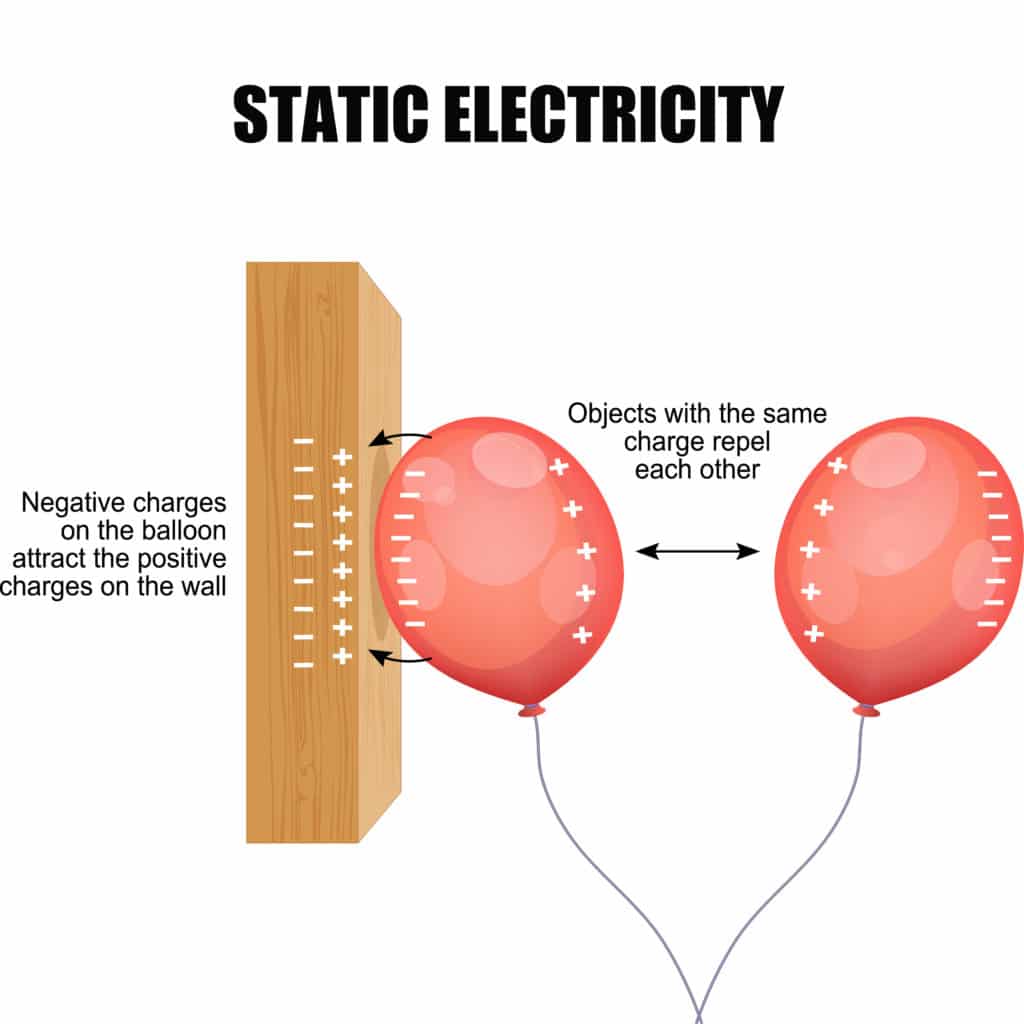Static Electricity Is Best Described as
This worked because plastic is a great insulator and thus cannot dissipate static electricity very well. What youve just read is the traditional widely accepted explanation of static electricityand youll still find it described that way in most school books.
__________ can move from atom to atom and object to object.

. But in 2011 scientists reported some important new discoveries that seemed to suggest much more was going on. It is called static because the displaced electrons tend to remain stationary after being moved from one insulating material to another. One of the most common causes of static electricity is the contact between solid objects.
Static electricity results from an imbalance between negative and positive charges in objects. Whereas in current electricity the electrons are moving inside the conductor. There are materials described as having anti-stat additives and other materials described as being statically dissipative and still others as being.
Drastic electricity rapidly moved from one object to another when. A motor with the voltage connected the wrong way. In static electricity theres a.
The result of an imbalance of this fluid electrons between objects is called static electricity. Greek philosopher Thales of Miletus made the first account. In his sixth century BC.
It is considered static due to the fact that there is no current flowing as. So when an object comes in close contact with such an object it creates a charge dis balance with the positive and the negative charges in between the two specific objects. Electrostatic discharge ESD is the sudden flow of electricity between two electrically charged objects cause by contact an electrical short or dielectric breakdown.
Static Electricity - Electrons At Rest. Static electricity is an imbalance of electric charges within or on the surface of a material or between materials. ESD occurs when two electrically charged.
The charge remains until it is able to move away by means of an electric current or electrical discharge. Static electricity is a build up of an electrical charge on the surface of an object. Current electricity can be deadly.
The Physics Classroom serves students teachers and classrooms by providing classroom-ready resources that utilize an easy-to-understand language that makes learning interactive and multi-dimensional. Static electricity is an imbalance of electrical charges within or on the surface of a material. Two objects with different charges come close together.
Static electricity is almost always safe. Writings he noted that if amber was rubbed hard enough small dust particles will. Static electricity is often created when two objects that are not good electrical conductors are rubbed together and electrons from one of the objects rub off onto the other.
Static electricity is named in contrast with current electricity where the electric charge flows through an electrical conductor or space and transmits energy. A buildup of electric charge on an object. The difference between the two is based simply on whether the electrons are at rest static or in motion dynamic.
Static electricity refers to an imbalance between the electric charges in a body specifically the imbalance between the negative and the positive charges on a body. This imbalance of electrons produces an electric field that can be. The imbalance between the positive and negative charges within an object causes the discharge of electrical pulse known as Static Electricity.
Electrostatic charge is most commonly created by the contact and separation of two similar or dissimilar materials. The imbalance in the charge is introduced by physical means. Sudden releases of built-up static electricity can.
Static electricity is one of the oldest scientific phenomena people observed and described. The most significant difference between the static and current electricity is that in static electricity the charges are at rest and they are accumulating on the surface of the insulator. One of the initial most explanation of the phenomenon of Static Electricity was explained by Micheal Faraday in.
Static Electricity Chapter Exam Take this practice test to check your existing knowledge of the course material. The other differences between the static and current electricity are explained below in the comparison. Static electricity is a sudden transfer of protons.
Static Electricity is best described as. ESD sensitive components can be damaged by as little as. Introduction to Static Electricity.
When we need to reduce the likelihood of static build up in plastics we have some options. If you arent aware static electricity is described as the accumulated buildup of the electrical charges and impulses on the outer layer of an object. A backwards-working electric motor is best described as.
Static electricity simply put is nothing more than an imbalance of positive and negative charges. Most people feel ESD above. Written by teachers for teachers and students The Physics Classroom provides a wealth of resources that meets the varied needs of both students and teachers.
An inefficient energy-wasting device. In current electricity theres a single transfer of electrons. The next idea to understand is that opposite charges attract while charges that are the same repel each other.
Electric charge that has accumulated on an object. Electricity is often described as being either static or dynamic. What is Static Electricity.
Well review your answers and create a Test Prep Plan for you based on. __________ is made up of tiny particles called atoms. Static electricity is defined as an electrical charge caused by an imbalance of electrons on the surface of a material.
__________ contain tinier particles called electrons. This happens for example when combing ones hair or taking off a sweater. Current electricity involves a continuous flow of neutrons.

Teaching Ideas For Static Electricity Science Electricity Third Grade Science Science Lessons



No comments for "Static Electricity Is Best Described as"
Post a Comment